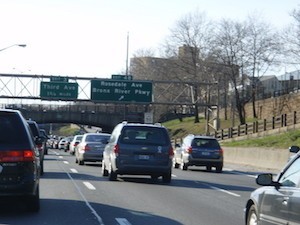
Let’s start with the opposite: when an officer is allowed to issue a ticket? A cop must have an objective, clearly articulable violation of an ordinance or statute which prompts the traffic stop. This is referred to as “probable cause.” There are some exceptions to this, such as an investigative stop based on reasonable suspicion of a crime. If neither of the above are the case, the stop would be considered unlawful.
That said, if you have been pulled over it is usually reasonable to assume that the officer clearly witnessed a violation. When a driver isn’t cited, it is usually because the officer exercised discretion and decided not to. Law enforcement officials have surprisingly wide latitude in discretion — they can warn or ticket for a lot of reasons, including patently superficial ones. They can also choose to issue tickets for relatively trivial offenses, or issue a warning for serious ones.
The bottom line is that there isn’t necessarily a rhyme or reason behind the decision to ticket or not ticket. Does that mean that getting off with a warning is a matter of luck? Perhaps, but there are some things you can do to increase your chances, such as:
- Be polite. Remember that the officer is only doing his/her own job.
- Be calm. Don’t get frustrated or angry. At the same time, don’t gush or turn on the water works (this may work sometimes for women, but only in moderation).
- Be quiet. In other words, don’t offer any more information than you have to. Don’t admit to the infraction. If you do and the officer does issue a ticket, that admission can be used against you should you challenge to ticket in court.
- Be cooperative. Provide the legally required information and documents in a timely manner. Also, keep the music down and your hands on the wheel. In the daytime, take off your sunglasses. At night, turn on the interior car lights.
Realize that even if you do all of the above you may still get a ticket. If you or a loved one has been ticketed for speeding or any other traffic violation in New York or New Jersey, you need expert legal counsel right away. The lawyers of the Rosenblum Law Firm are skilled traffic ticket attorneys who are experienced in handling tickets for speeding as well as other driving-related offenses. Call 888-203-2619 or email the Rosenblum Law Firm today for a free consultation about your case.








